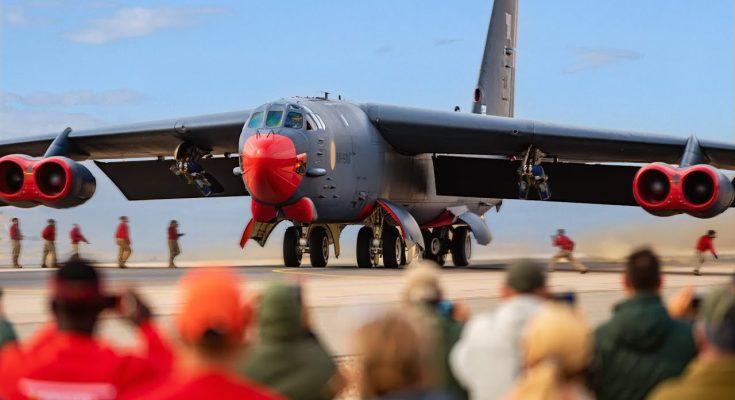100 Years in the Sky? US Is Testing a New Airborne Monster — the B-52
The United States Air Force is pushing the boundaries of aerospace longevity with a plan that could keep the iconic B-52 Stratofortress flying well into the 2050s — and possibly beyond. First introduced in 1955, this legendary bomber may soon become the first military aircraft in history to achieve 100 years of operational service, thanks to an ambitious and ongoing modernization effort.
Dubbed affectionately as the “BUFF” — Big Ugly Fat Fella — the B-52 was originally designed during the Cold War to carry nuclear weapons over long distances. Yet, in an era of stealth fighters, hypersonic missiles, and AI-driven combat systems, this old warbird is not only still flying — it’s being reborn.
Born in the Cold War, Reborn for the Future
The current upgrade program transforms the B-52 into a 21st-century airborne powerhouse. Under the Commercial Engine Replacement Program (CERP), the aircraft’s aging TF33 engines — which date back to the 1960s — will be replaced with modern Rolls-Royce F130 turbofans. These new engines will provide greater fuel efficiency, reliability, and thrust, reducing maintenance while extending the bomber’s range and time on station.
Alongside the new engines comes a sweeping overhaul of the aircraft’s radar, electronics, and weapons systems. The old analog cockpit is being phased out in favor of a digital glass cockpit, making the aircraft easier to operate and maintain. A new AESA radar system, similar to the APG-79 used in fighter jets, will give the B-52 modern targeting and tracking capabilities. These improvements will allow the bomber to engage threats more precisely, in all weather, and at much greater distances.
New Teeth for an Old Giant
In addition to updated avionics, the B-52 is being integrated with modern smart weapons, including the Long Range Stand Off (LRSO) cruise missile and hypersonic weapons currently in development. The bomber’s payload flexibility — it can carry up to 70,000 pounds of bombs, missiles, and mines — ensures it will remain a cornerstone of U.S. strategic power.
Its robust airframe is also a major factor in its longevity. Despite being decades old, many of the airframes have seen fewer flight hours than modern commercial jets. With new brakes, wheels, and structural enhancements, the B-52 is being made ready for the challenges of 21st-century warfare.
A Century in the Sky?
Though some of the upgrade programs have faced delays and budget pressures, the Air Force remains committed to keeping the B-52 relevant. With the new engine rollout expected by the early 2030s and additional upgrades continuing through the decade, it’s not far-fetched to imagine the B-52 still flying missions as it approaches its centennial in 2055.
If it achieves that milestone, the B-52 won’t just be a legend — it will be a symbol of how innovation and adaptability can keep even the oldest war machines flying high in a new age of warfare.



